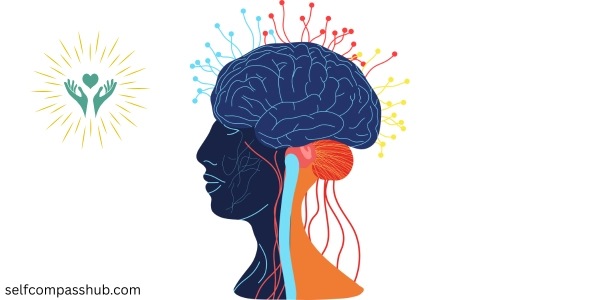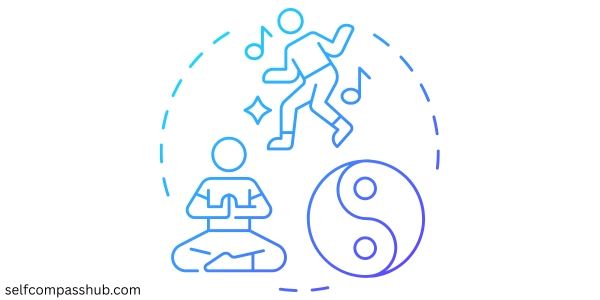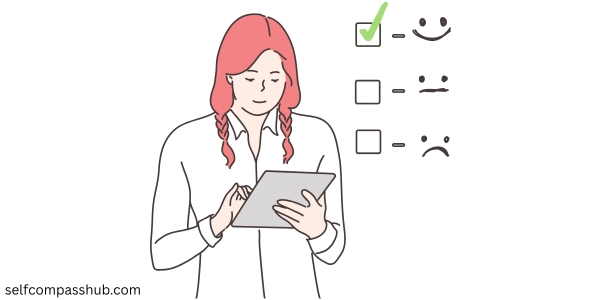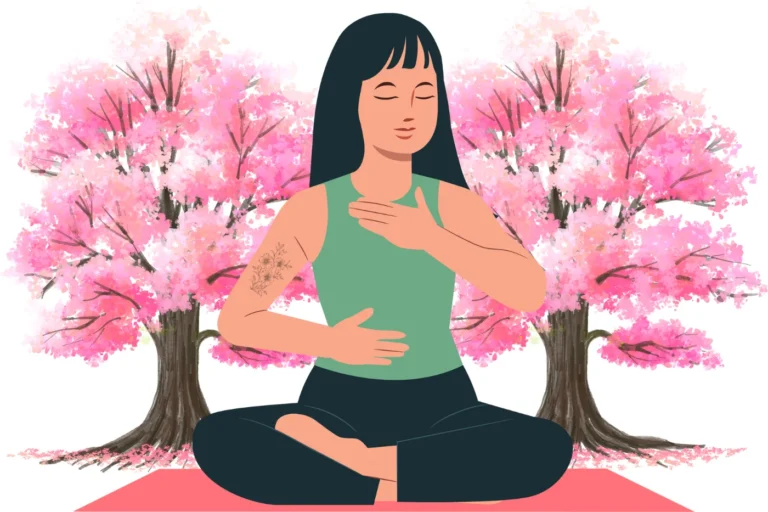The journey back to ourselves begins with listening to the wisdom of our bodies.
The mind-body connection is a powerful tool for healing. While traditional talk therapy has its place, our bodies hold memories of stress and trauma that words alone cannot reach. Somatic healing – practices that use body awareness to promote healing – offers a complementary approach that honors this physical dimension of our emotional experiences.
Understanding Somatic Healing
“The body keeps the score. If the memory of trauma is encoded in the viscera, in heartbreaking and gut-wrenching emotions, in autoimmune disorders and skeletal/muscular problems, this demands a radical shift in our therapeutic assumptions.” – Bessel van der Kolk
Somatic healing is based on the premise that trauma and stress aren’t just mental experiences – they’re physically stored in our bodies. When we experience threat or danger, our nervous system activates survival responses.
If these responses aren’t properly processed and released, they can become trapped in the body, manifesting as chronic tension, pain, or illness.
Somatic approaches help us:
- Recognize how emotions manifest physically
- Release stored tension and trauma
- Reconnect with our bodies in a safe, supportive way
- Restore regulation to our nervous system
- Build resilience to stress
Key Principles of Somatic Work
1. Interoception: Developing Body Awareness
Interoception * the ability to sense internal bodily states – is fundamental to somatic healing. Many of us have disconnected from bodily sensations as a protective mechanism, but healing requires gently rebuilding this awareness.
Practice: Set aside 5 minutes daily for a body scan. Starting at your feet and moving upward, notice sensations without judgment. Where do you feel tension? Warmth? Tingling? Emptiness? Simply observe without trying to change anything.
2. Pendulation: Moving Between Comfort and Discomfort
Healing doesn’t mean diving into overwhelming sensations. Somatic Experiencing, developed by trauma expert Peter Levine, teaches pendulation – the rhythmic movement between states of relative comfort and discomfort – as a way to process difficult sensations gradually.
Practice: When working with challenging emotions, notice where you feel them in your body. Then shift your attention to a part of your body that feels neutral or pleasant. Move back and forth between these areas, spending more time in the comfortable zone.
3. Titration: Processing in Small Doses
Approaching trauma in manageable increments prevents overwhelm and retraumatization. This allows the nervous system to build capacity gradually.
Practice: If exploring a difficult memory, focus first on just one aspect – perhaps a single sensory detail. Notice any bodily sensations that arise, stay present with them until they shift, then pause and resource before continuing.
Effective Somatic Techniques
1. Grounding Exercises
When we’re triggered, we often disconnect from our bodies. Grounding techniques help reestablish safety by connecting us to the present moment through physical sensation.
Practice: The 5-4-3-2-1 technique. Notice 5 things you can see, 4 things you can touch, 3 things you can hear, 2 things you can smell, and 1 thing you can taste. Feel your feet on the ground as you do this.
2. Breath Work
Our breath is a direct link to our autonomic nervous system. By changing our breathing patterns, we can shift from stress responses to relaxation.
Practice: Box breathing. Inhale for 4 counts, hold for 4, exhale for 4, hold for 4. Repeat for 5 minutes, visualizing tracing the sides of a square with each phase.
3. Tension and Release
Progressive muscle relaxation helps identify and release chronic tension we may not even realize we’re holding.
Practice: Systematically tense and release muscle groups throughout your body. Hold each tension for 5-7 seconds, then release completely for 20-30 seconds, noticing the contrast between tension and relaxation.
4. Movement Practices
Free, expressive movement allows the body to discharge energy and process emotions that may be stored physically.
Practice: Put on music that resonates with your current emotional state. Allow your body to move naturally, without choreography or judgment. Follow impulses to shake, stretch, or dance as they arise.
5. Therapeutic Touch
Self-touch can provide comfort and regulation to an activated nervous system.
Practice: Place one hand on your heart and one on your belly. Breathe deeply into these areas, offering yourself compassion and support just as you would to a dear friend in distress.
Integrating Somatic Healing Into Daily Life
Somatic awareness isn’t just for healing sessions – it can be incorporated throughout your day:
- Morning check-in: Before getting out of bed, scan your body. What sensations are present? What might your body need today?
- Micro-breaks: Set reminders to check in with your body throughout the day. What’s your posture? Where are you holding tension?
- Emotional processing: When strong emotions arise, ask yourself: “Where do I feel this in my body?” Stay with the physical sensation rather than getting caught in the mental story.
- Boundary setting: Notice bodily sensations that signal when a boundary is being crossed. Trust these signals as valuable information.
When to Seek Professional Support
While self-directed somatic practices are valuable, working with a trained practitioner is recommended for:
- Processing significant trauma
- Persistent symptoms that don’t resolve with self-practice
- Overwhelming emotions that emerge during somatic work
- Learning new techniques tailored to your specific needs
Look for certified practitioners in modalities like Somatic Experiencing, Sensorimotor Psychotherapy, Hakomi, or TRE (Trauma Release Exercises).
Final Thoughts
Our bodies carry our histories – both our wounds and our wisdom. Somatic healing offers a pathway back to ourselves, helping us reclaim our innate capacity for self-regulation, resilience, and joy.
By listening to the stories our bodies tell and responding with compassion, we can release old patterns and create new possibilities for living fully embodied lives.
“The cure for the pain is in the pain.” – Rumi
Remember that healing isn’t linear, and somatic work is about building a relationship with yourself over time. Be patient, gentle, and curious as you begin this journey of coming home to your body.
This post is for informational purposes only and is not intended as a substitute for professional medical or psychological advice. If you’re experiencing significant trauma symptoms, please consult with a qualified healthcare provider.










